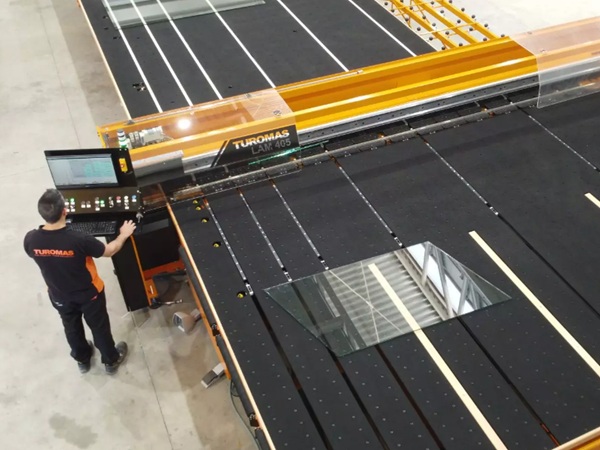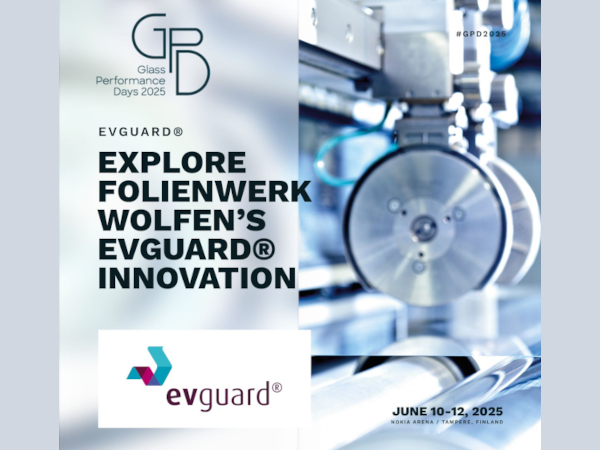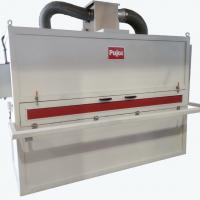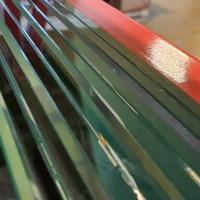Date: 12 February 2014
After laminated safety glass has been cut, broken down and separated, this machine allows the storage of any remaining residual glass without the need for further space and without having to stop the manufacturing process.Moreover, the glass can be put back into production as and when required.
.jpg)
“Green has always been our colour”, says Manfred Vollbracht, “and in fact since the very beginnings of our company in 1976, before there was any Green Party whatsoever. The Managing Director of the German glass machine engineering company Hegla in the small town of Beverungen in the Weserbergland region is referring to the colours in the company’s logo. Apart from black and white, the predominant colour in this logo is green. “It’s the traditional glazier’s colour,” says Vollbracht who has worked for the company for more than three decades.
Environmental protection and thus also sustainability have long been playing an increasingly bigger and indeed essential role at Hegla. The Managing Director still has very clear memories of the year 2002, when his company launched the ReMaster at the glasstec trade fair in Düsseldorf and was at first smiled upon by parts of this industry. Sceptics found it hard to believe that the new system might become widely accepted on the market. “They probably didn’t take us very seriously,” says Vollbracht. But things have changed since then.
Savings on staff
Andreas Herzog Jun. is Managing Director of Glas Herzog GmbH, which makes high-quality glass, mainly for the building sector. Until recently this company, which is situated in Waghäusel between Heidelberg and Karlsruhe, had to employ two people at its cutting line for laminated safety glass (LSG – known as VSG in German). Remaining glass residues were taken off the conveyor by hand and then sorted. Any items that were the right size were re-integrated into the production process – again, by hand. For nearly three years now this cutting line has required only one person. All the rest, says Herzog, “is handled by the ReMaster.” For him the benefit of the machine is above all that each piece is automatically and safely placed in bays from where it can easily be put back into the production process at any time. This apparently increases the quality of the glass, reduces the risk of injuries to staff and allows much better planning. Moreover, there is less scrap. “We would buy another one straight away,” says Herzog, “especially for laminated safety glass.”
More recovery of residual glass
The pattern which is followed by the VSG ReMaster is very simple. After the cutting and breaking process the remaining residual scrap sheets are fed back into the system, where they are automatically lifted up and placed into intermediate storage. The computer knows exactly where which sheet is located and can then put it back into production any time if it is suitable for a given manufacturing process. According to Hegla’s Managing Director Vollbracht, the recovery rate for glass residuals is about 25 to 30 per cent higher. However, the greatest highlight of this patented system is its location. The storage area – and thus virtually the entire system – is situated directly above the production line. There is no need for any additional storage space, which would otherwise be required for those residuals. Thanks to a multiple loading option, it is possible to have up to 40 bays, each automatically storing three to four sheets, depending on size. The ReMaster, says Vollbracht, is available not only for LSG, but also for float glass. Approximately 75% of all systems are sold in Europe, while the rest is sold overseas, mainly in the United States. “We want to offer our customers added value with our products,” says Vollbracht. Hegla will be demonstrating its VSG ReMaster at glasstec, the leading trade fair for the glass industry in Düsseldorf in October.
Timo Feuerbach is responsible for glass machinery within the VDMA. The purpose of the VDMA initiative BlueCompetence, he says, is to bundle the know-how and strengths of German mechanical engineering companies and thus to help towards the worldwide visibility and further development of their technical and market leadership. BlueCompetence specifies certain “robust criteria which every company needs to meet if they want to be part of the initiative.” Sustainability plays a major role in this. Participation is open to all companies which are members of VDMA.




























Add new comment